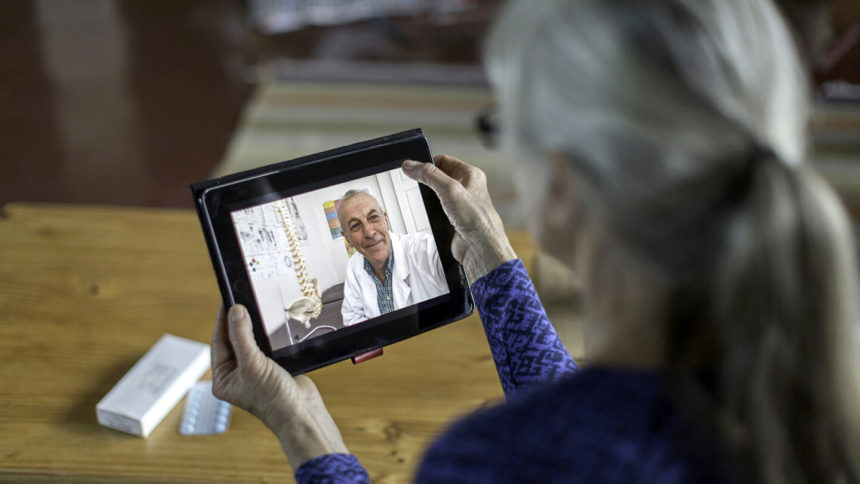
Telemedicine visits in long-term care facilities soared by 266% in May 2020, but the use of such technology dropped to a new baseline level by late 2022.
Still, use remains significantly above historic levels that had restricted telehealth services to less than 1% of the skilled nursing residents. And new research shows that, with support, specialty services and rural health deserts could grow demand.
Researchers from several Boston universities and medical centers found that by 2022, the use of telemedicine visits dropped by 33% from 2020. From January 2019 to February 2020, telemedicine visits accounted for just .15% of all health visits for nursing home residents; in May 2022, that jumped to using telehealth tools during 40% of SNF and outpatient visits, according to the study published Friday in JAMA Network Open.
“Our results should be a wake-up call that telemedicine has not been a ‘field of dreams’ situation where SNFs just come and use the technology without any further systems in place,” Michael L. Barnett, M.D., associate professor of Health Policy and Management at Harvard T. H. Chan School of Public Health, told McKnight’s Long-Term News on Friday. “We need to learn more about why SNFs are not using telemedicine more, but it is clearly not filling a high priority need in SNFs because few are continuing to use it regularly.”
The study found that half of all telemedicine visits in 2020 and 2021 were clustered in 18% of nursing facilities. The authors cautioned that, despite “big gains” in usage, telehealth visits remain underutilized generally.
In 2019, just three Midwestern states — where a lack of local specialists created high need — had more than 1% of health visits delivered via technology. A year later, all US states were using telemedicine at varying levels of participation. But by the first half of 2022, just one state used telemedicine for more than 10% of nursing facility visits and eight states had returned to using it less than 1% of the time.
The authors wrote that clinicians are “rarely” on-site on nights and weekends, which leads to unnecessary emergency room visits for nursing home residents, who also have to leave the facility for specialty care.
“The resulting delays or absence of care contributes to avoidable hospitalizations and emergency care visits,” the study noted. “Little is known about the potential effect of greater telemedicine use in SNFs, including whether it could potentially alleviate long-standing gaps in access to specialists or urgent care after hours.”
In this study, telemedicine use for psychiatry visits led to improved access to care.
“Likely, telemedicine helped maintain established patient-clinician connections and expanded access to potential new clinicians, especially amid the long-standing decline in psychiatrist numbers,” the authors wrote. “A policy to encourage continued telemedicine use may facilitate further access to important services as the technology matures.”
One of the flexibilities allowed by the federal government was the use of telemedicine for evaluation and management for nursing facility residents so as to limit the spread of COVID-19. Nearly all of those flexibilities ended on May 11 when the public health emergency declaration was lifted.
“Little is known about the potential effect of greater telemedicine use in SNFs, including whether it could potentially alleviate long-standing gaps in access to specialists or urgent care after hours,” the authors wrote. “As policymakers debate the future of telemedicine reimbursement beyond the COVID-19 emergency, understanding patterns of adoption can guide policy and regulations to help telemedicine improve access to care in SNFs.”




